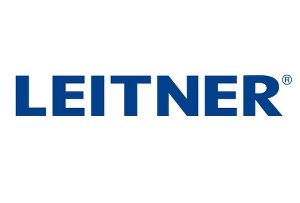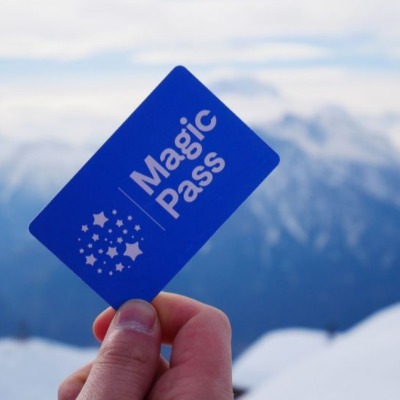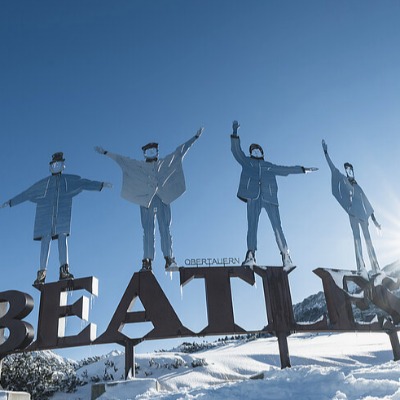Experience Legendary Silver Belt Competition At Sugar Bowl. Freeride Event Demonstrating Big Lines & Big Air Scheduled For April 2–5, 2025
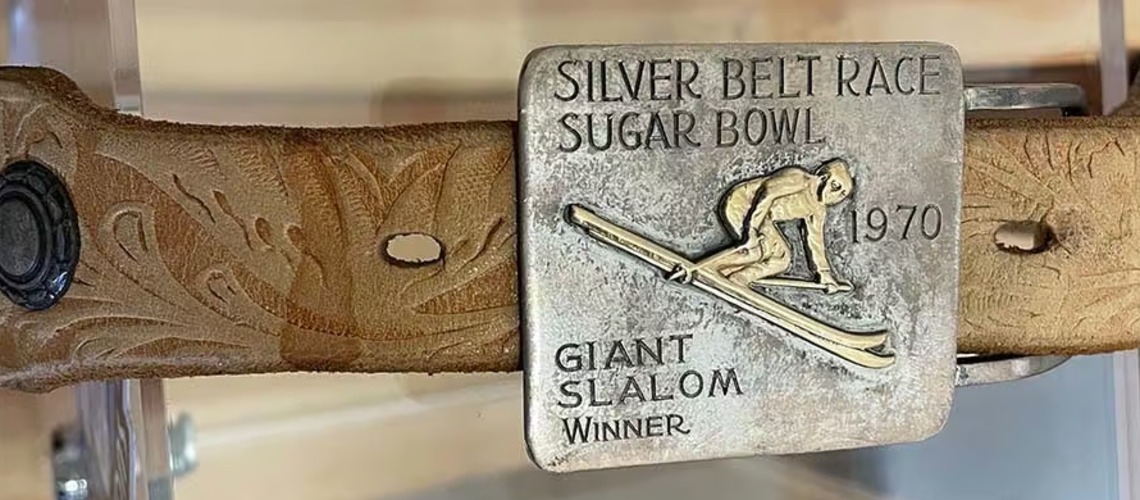
One of skiing’s most celebrated competitions is back. The famed Silver Belt returns to Sugar Bowl Resort from April 2–5, reigniting its legacy with a freeride competition that brings world-class athletes and future legends head-to-head. New this season, elite snowboarders will join the freeski professionals in this historic test of skill and courage.
Sugar Bowl has intentionally brought back one of its most coveted events toSome description celebrate the love of sport and competition, with a special focus on inspiring the next generation of skiers and riders. Rooted in a legacy of testing grit, the Silver Belt has evolved from its 1940s origins into a freeride competition that honors its storied past while embracing the creativity and progression of today’s skiers and riders.
In the 1940s, the Silver Belt Classic was a proving ground for Olympians and
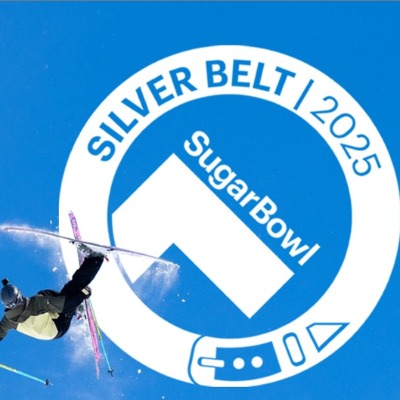 World Cup skiers from around the globe. This high-speed, off-piste giant slalom demanded courage and precision as competitors raced their long wooden skis down a 1,300-foot course carved into Sugar Bowl’s rugged natural terrain. Winding through gullies and chutes, the Silver Belt quickly became a legendary test of grit, skill, and mountain mastery. Not only was it harrowing and treacherous, but from 1940–1956, you had to hike up to get there!
World Cup skiers from around the globe. This high-speed, off-piste giant slalom demanded courage and precision as competitors raced their long wooden skis down a 1,300-foot course carved into Sugar Bowl’s rugged natural terrain. Winding through gullies and chutes, the Silver Belt quickly became a legendary test of grit, skill, and mountain mastery. Not only was it harrowing and treacherous, but from 1940–1956, you had to hike up to get there!From 1940-1975, The Silver Belt Classic was one of the top skiing events of its time. Spring would roll around and skiers from around the world would make the trek to Donner Summit to take on the giant slalom course on Mount Lincoln. There were not grooming machines at this time, so the course was whatever the mountain had to offer. The race course ran between rocks and trees, down gullies and chutes, to the right of where the current Lincoln chairlift is as you look going up the lift.
Picture skis that were made of long wooden planks (very different from the nimble skis of today) pointed straight down 1,300’ of vertical terrain. Skiers would use the natural terrain Sugar Bowl offered to test themselves and see who had the grit and talent to take home the prized silver belt. At the time, it was the most difficult race in California and the fifth most difficult in North America.
The winner got to claim a coveted silver-studded belt that had a silver buckle, a tradition that originated at a popular longboard race held in the 1850’s by miners in nearby Plumas County.
A 1948 issue of Western Skiing Magazine described the course as a, “straight schuss, then a check and a gate, winding up in a final schuss down near the vertical steilhang to the finish gate that curdled the blood of most of the spectators and half the racers.” For 35 years, the Silver Belt Classic was one of the most challenging ski races around, hosting Olympians at the start line, including Starr Walton, Billy Kidd and Phi & Steve Mahre.
This course style was very European and hadn’t yet been seen much in America, making it that much more unique to the area. Bill Klein was most often the one to set up the course, usually with the help of some competitors and locals who would boot pack certain sections of the run.
To compete was by invitation only, and the race was only part of the fun. The Silver Belt was a host of celebration and games. Traditionally, the evening before the race was full of people making bets on who would win the race. And post- Silver Belt, people would gather to play a game of softball on skis. Many of the local homeowners would open up their homes to put up racers and spectators. Silver Belt made a name for itself in the ski history books, and brought folks from all over the world together in celebration.
From April 2–5, top athletes from around the world will descend on the famed Silver Belt Gully to showcase their skills. Competing for a $10,000+ cash prize purse split between the top three females and males—and the coveted Silver Belt title awarded to the best overall athletes—this event promises an unforgettable celebration of talent, grit, and the pure spirit of the sport.
The winner got to claim a coveted silver-studded belt that had a silver buckle, a tradition that originated at a popular longboard race held in the 1850’s by miners in nearby Plumas County.
A 1948 issue of Western Skiing Magazine described the course as a, “straight schuss, then a check and a gate, winding up in a final schuss down near the vertical steilhang to the finish gate that curdled the blood of most of the spectators and half the racers.” For 35 years, the Silver Belt Classic was one of the most challenging ski races around, hosting Olympians at the start line, including Starr Walton, Billy Kidd and Phi & Steve Mahre.
This course style was very European and hadn’t yet been seen much in America, making it that much more unique to the area. Bill Klein was most often the one to set up the course, usually with the help of some competitors and locals who would boot pack certain sections of the run.
To compete was by invitation only, and the race was only part of the fun. The Silver Belt was a host of celebration and games. Traditionally, the evening before the race was full of people making bets on who would win the race. And post- Silver Belt, people would gather to play a game of softball on skis. Many of the local homeowners would open up their homes to put up racers and spectators. Silver Belt made a name for itself in the ski history books, and brought folks from all over the world together in celebration.
From April 2–5, top athletes from around the world will descend on the famed Silver Belt Gully to showcase their skills. Competing for a $10,000+ cash prize purse split between the top three females and males—and the coveted Silver Belt title awarded to the best overall athletes—this event promises an unforgettable celebration of talent, grit, and the pure spirit of the sport.
In 2025, the Silver Belt honors its legendary roots while embracing modern freeride progression, offering competitors the chance to push their limits and throw their biggest tricks in an athlete-judged format.
When:
April 2–5, 2025
Where:
Sugar Bowl Resort
629 Sugar Bowl Rd, Norden, CA 95724
Event Schedule:
Wednesday, April 2 – Silver Belt Qualifier in Sugar Bowl
Thursday, April 3 – Build Day
Friday, April 4
- 9 a.m. to 2 p.m. | Silver Belt Finals in Silver Belt Gully
- 9 a.m. to 6 p.m. | Vendor Village, Live Music, Autograph Sessions, and Aprés Party at Village Lodge
- From 6 p.m.| Athlete Judging and Awards Ceremony at Village Hall
Personalities
- Bridget Legnavsky, CEO, Sugar Bowl Resort
- Xander Guldman, Athlete Ambassador, Silver Belt representative on Event Committee
- Skogan Sprang, U.S. Ski + SnowBoard Pro Team Coach, Silver Belt Event Committee
- David Wise, Sugar Bowl Ambassador + 2x Olympic Gold Medalist in Halfpipe; 5x X Games Gold Medalist
- Plus more
Highlighted Event Athletes:
- Elena Messner, defending Silver Belt champion
- Ben Richards, Top 5 overall Freeride World Tour athlete
- McRae Williams, 2017 FIS World Championships Gold Medal in Slopestyle; 2018 Olympian for US in Slopestyle; X Games Gold and Silver medalist
- Cass Jones, son of Jeremy Jones
- Jess Hotter; FWT badass, 2022 & 2019 Overall World Champion, 3 time gold medalist on the FWT, 8 time Gold Medalist on the FWQ
- Legacy Silver Belt winners / participants from Original Silver Belt
Visual Opportunities:
- World-class skiers and snowboarders competing on extreme terrain
- Big mountain freeride action with high-speed descents and massive airs
- Podium awards ceremony and athlete celebrations
- Vendor Village with ski + board demos, outwear repairs and more
- Historical stories from past Silver Belt winner and participants





